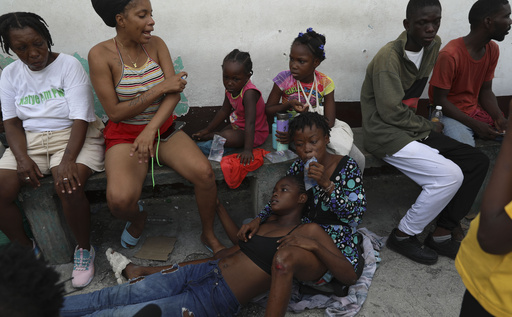
SAN JUAN, Puerto Rico — A recent report from UNICEF indicates a shocking rise in the recruitment of children by gangs in Haiti, with the number of minors targeted increasing by 70% over the past year. It is estimated that between 30% and 50% of all gang members in Haiti are now children, a statistic that raises alarm among international organizations.
“This trend is deeply troubling,” stated Geeta Narayan, UNICEF’s representative in Haiti. The escalation in child recruitment coincides with worsening poverty and violence amid a backdrop of political instability. Gangs, which currently control approximately 85% of Port-au-Prince, have begun to attack areas that were once peaceful, all in efforts to exert complete dominance over the capital.
Boys in these gangs often serve as informers due to their perceived invisibility and lack of threat. They are sometimes armed and coerced into participating in violent acts. Girls are not exempt from this grim reality; many are forced into domestic roles or given to gang members as “wives.” “They’re not doing this voluntarily,” Narayan emphasized, underlining that even when armed, these children remain victims.
In a nation where over 60% of the populace survives on less than $4 daily, the ease of recruiting minors is apparent. Some young gang members reported earning up to $33 weekly, with others claiming lucrative payments in their initial months. “Children and families are increasingly desperate, driven by extreme poverty,” Narayan noted, highlighting the dire situation.
When children refuse to join gangs, they often face threats to themselves or their families, or in some cases, abduction. Gangs actively target children who have been separated from their families, particularly those deported from the neighboring Dominican Republic. “These children are particularly vulnerable,” Narayan pointed out.
In addition to gang threats, a rising vigilante movement aims to take down alleged gang members, creating another danger for minors who may be seen as spies. UNICEF warns that those who defect or decline to engage in violence find their lives in jeopardy. Recently, a social media video depicted the aftermath of a gang attack, where a child’s body lay alongside an adult, as police reported that at least 28 alleged gang members were killed during clashes between armed residents and law enforcement.
The gangs responsible for much of the child recruitment include groups known as 5 Segond, Brooklyn, Kraze Barye, Grand Ravine, and Terre Noire. New recruits are often tested through tasks like buying food and forming friendships in the gang. Success during confrontations can lead to promotions, solidifying a vicious cycle. The recruitment of children is surging as schools remain shuttered, leaving them exceptionally vulnerable. Recent gang activity has displaced over 700,000 people, including about 365,000 minors, many of whom now live in makeshift shelters where they are exposed to potential abuse.
A report from Human Rights Watch corroborates the dire situation, detailing horrific instances of sexual abuse against girls and women perpetrated by gang members. One account cited a 14-year-old girl who was kidnapped and repeatedly assaulted by various men over five harrowing days. Although violence among the armed groups has lessened this year, attacks on civilians, police officers, and essential infrastructure have intensified.
Experts warn that gangs are stooping to target children as young as eight years old, and the longer a child remains embedded within a gang, the more challenging it becomes to rescue and reintegrate them into society. The normalization of violence creates a detrimental environment for the psychological development of children.
Several pathways exist for children attempting to leave gangs; some manage to escape, others are assisted by nonprofit organizations that provide medical care, psychological support, and various forms of aid. “There is a transition period,” Narayan explained, acknowledging that the process is complex and fraught with challenges. “It’s not a straightforward journey.”
